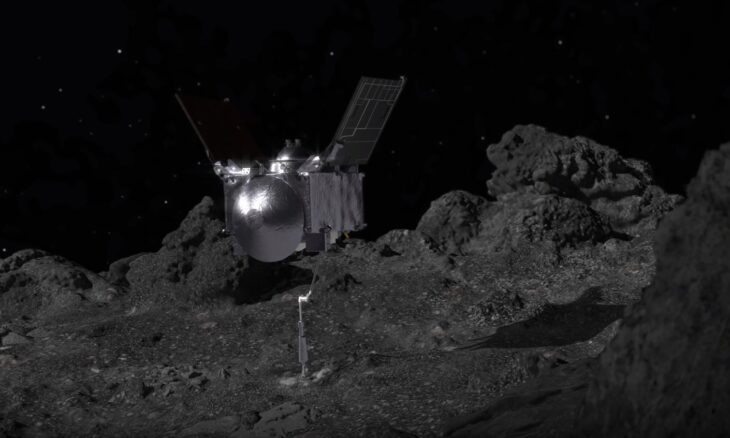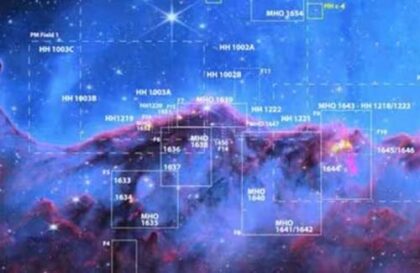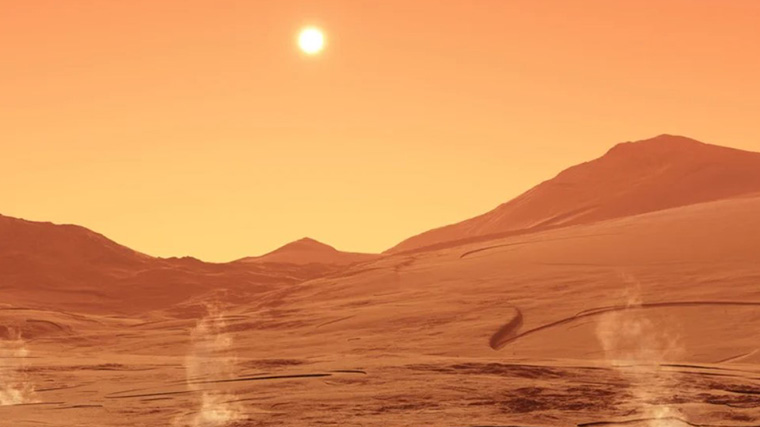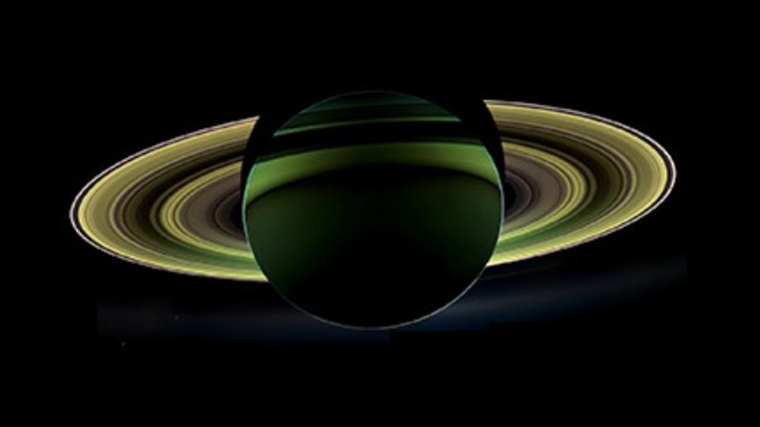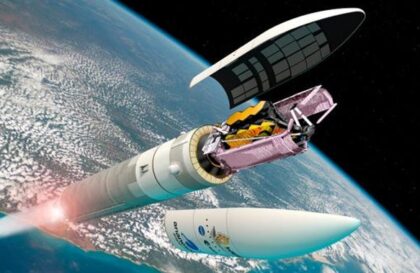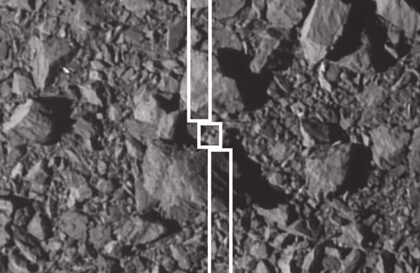During the intensive sounding period, it was decided to choose the optimal place for collecting samples from the asteroid’s surface. The probe planned to raise its solar panels to the Y-position to avoid getting dust on them during contact with the asteroid. The process of descent to the asteroid took place extremely carefully to minimize the possible contamination of the surface of the asteroid with hydrazine fuel before the collision.
Capturing contact with the surface of asteroid Bennu was critical, and this was accomplished using accelerometers, with the force of the impact monitored using the TAGSAM (Touch-and-Go Sample Acquisition Mechanism).
Credit: NASA’s Goddard Space Flight Center Conceptual Image Lab
After the TAGSAM instrument successfully made contact with the asteroid’s surface, high-pressure nitrogen directed particles of regolith smaller than 2 cm in size into a sample collection container on the robotic arm’s limb. The time for collecting samples was limited to 5 seconds to reduce the risk of further collisions with the asteroid. After this procedure was completed, the device separated from the asteroid.
Credit:NASA’s Goddard Space Flight Center/CI Lab/SVS
In addition, the sample collection mechanism had contact parts designed to collect samples less than 1 mm in size, and they were made of small stainless steel loops.
After successful sample collection, the sample capsule had to be opened to collect the materials.
On October 24, 2020, NASA reported an unforeseen situation during the asteroid Bennu sample collection operation when too much regolith was collected, and the sample container failed to close completely.
Credit: NASA’s Goddard Space Flight Center/CI Lab/SVS
The mission lasted seven years and 18 days.
What are the goals of the OSIRIS-REx mission?
The OSIRIS-REx mission, launched in 2016, is a major mid-spacecraft operation and is part of the New Frontiers program as the third selected mission. The primary purpose of this mission is to collect samples from the surface of asteroid Bennu and return them to Earth for further scientific analysis. This task is of great scientific and practical importance, as it will help reveal many mysteries about the origin and composition of asteroids and clarify their role in the solar system.
In addition, OSIRIS-REx can assist in studying the asteroid Apophis, as the craft will be redirected to meet it as efficiently as possible. The new mission is vital because Apophis is a potentially dangerous asteroid that could come close to Earth in 2029. Research results will help reduce the threat from potentially hazardous asteroids and increase our understanding of their trajectories and properties.
The first task is to create a detailed 3D map of the surface of the Bennu asteroid. This will allow scientists to study this asteroid’s geological history and composition.
The second task is to study the chemistry and mineralogy of Bennu’s surface. Analysis of the chemical composition will help reveal what substances the asteroid is made of.
Credit: NASA’s Goddard Space Flight Center
However, the mission’s most important task is to return asteroid samples to Earth. The samples collected by OSIRIS-REx have become a treasure for scientific research. They will help solve many questions about the nature of asteroids and their impact on our planet.
In September 2023, the mission successfully returned to Earth with samples, and this scientific achievement serves as a critical moment for NASA’s solar system exploration. OSIRIS-REx is the third primary planetary science mission under NASA’s New Frontiers program, and its results open up new opportunities for studying and understanding our cosmic environment.
What scientific instruments are on board the OSIRIS-REx spacecraft?
The OSIRIS-REx spacecraft has a robotic arm to precisely collect loose rocks and dirt from the asteroid’s surface. This unique feature allows the craft to take material samples directly from the asteroid Bennu, which is of great scientific importance.
Credit: NASA’s Goddard Space Flight Center Conceptual Image Lab
In addition to the sample collection arm, OSIRIS-REx has a dedicated sample return capsule. This capsule is designed to safely transport and store the collected material from the asteroid to Earth.
The spacecraft’s onboard instruments are equipped with advanced technologies to create detailed 3D maps of the Bennu asteroid surface. In addition, the tools can view the asteroid in X-rays and infrared light, take images needed to collect samples, and measure Bennu’s temperature. These data help scientists unravel the asteroid’s geological history and chemical composition, which opens up new opportunities for studying the formation of the early solar system and the beginning of life.
Banner image: NASA’s Goddard Space Flight Center/CI Lab/SVS
Image credit:
https://smd-cms.nasa.gov
https://svs.gsfc.nasa.gov
https://beta.science.nasa.gov
